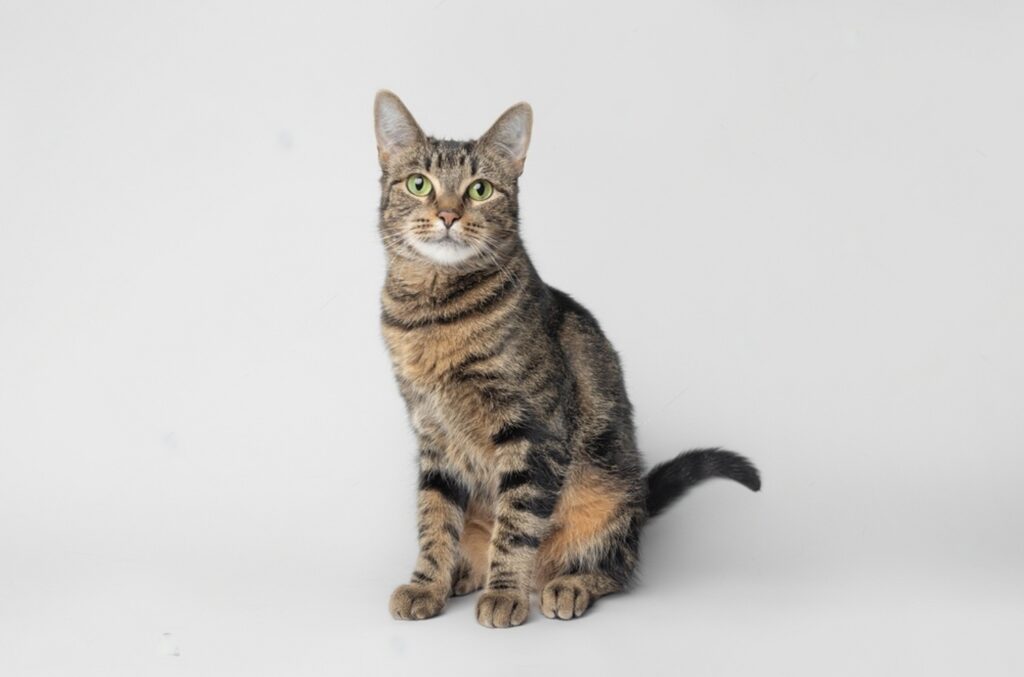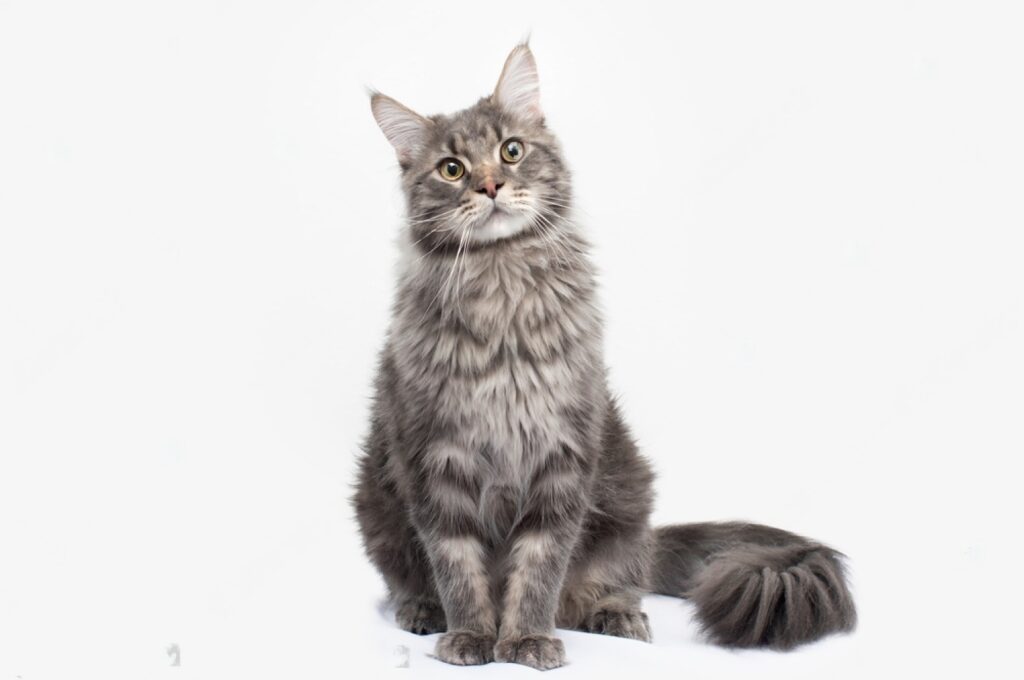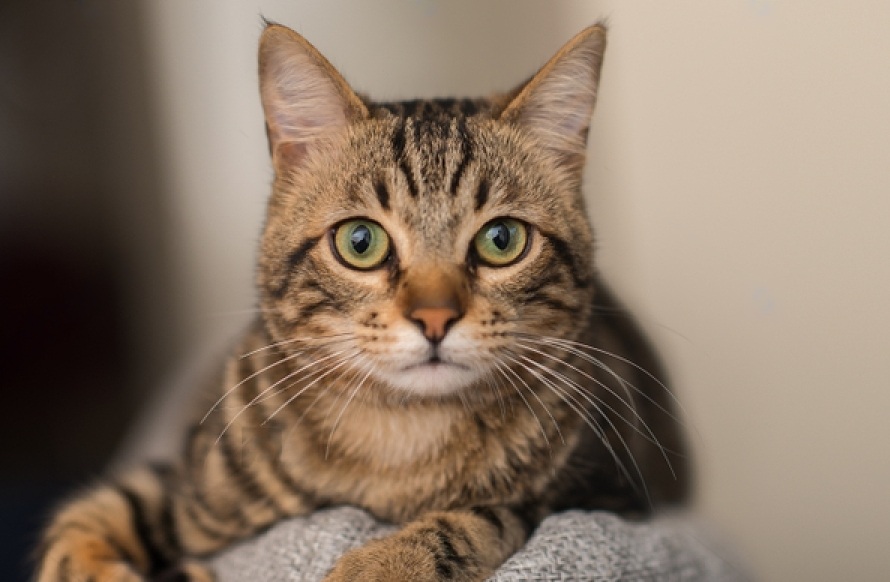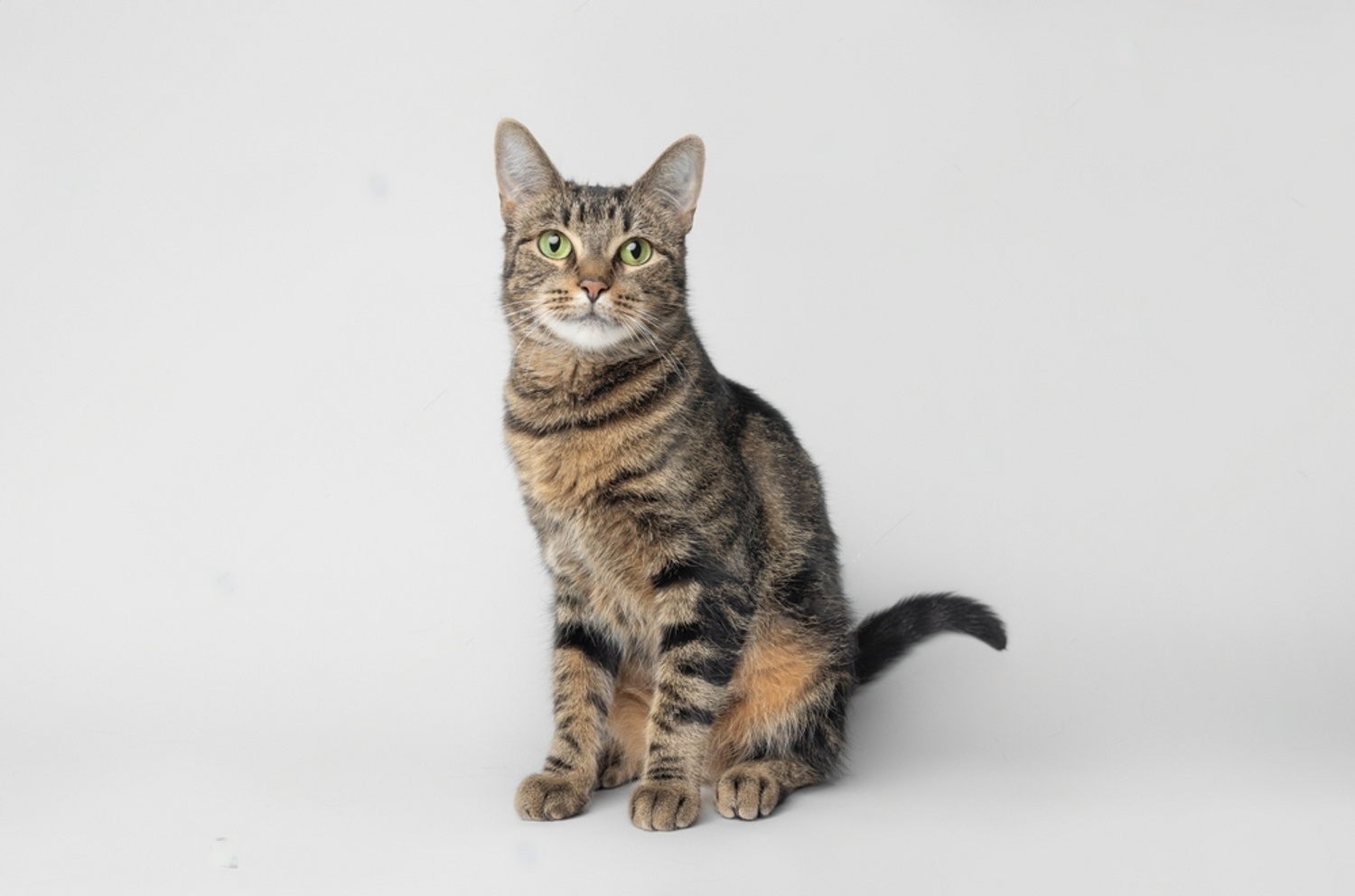
How To Dissolve Struvite Crystals In Cats Naturally
Struvite crystals in cats occur when the urine becomes too concentrated, causing urinary tract infections (UTIs). The crystals, a type of mineral deposit, are made up of magnesium, ammonium, and phosphate. Struvite crystals can cause symptoms similar to a UTI, such as frequent urination, and may even block the cat’s urinary tract. Dissolving struvite crystals in cats naturally is possible by using dietary adjustments and simple home remedies. These solutions can eliminate the presence of crystals, reduce the risk of future infection, and make the immaculate feline urinate more comfortably.
What Is Struvite Crystals?
Struvite crystals are a type of mineral salt found in urine due to a combination of high pH, high ammonium, and high phosphate levels. Struvite tends to form hard crystals that range in size from large ones being several millimeters in length, to small ones that are barely visible. Struvite can be a sign of a urinary tract infection (UTI) or even more serious conditions. If left untreated, it can lead to bladder stones, bladder irritation, and even serious infection. When struvite is first noticed in a urine sample, immediate action should be taken to treat and prevent the spread of infection. Treatment typically consists of a course of antibiotics and possibly other interventions, depending on the underlying cause. The main goal is to reduce the risk of infection and reduce the number of struvite crystals present in the urine.
How To Dissolve Struvite Crystals In Cats Naturally

Struvite crystals in cats can cause painful, medical conditions such as cystitis and bladder stones. This is why it’s important to dissolve these crystals naturally.
- Increase Water Intake: Encourage your cat to drink more water by providing fresh water throughout the day and better access to fresh, cool water.
- Include Wet Food: Wet food in your cat’s diet helps to increase the water content.
- Increase Fiber: Dissolving struvite crystals naturally involves increasing your cat’s dietary fiber content. This can be done by adding a few teaspoons of canned pumpkin to their food or by feeding them fiber-rich kibble.
- Increase Vitamin C: Vitamin C helps to convert substances into more soluble forms and can be found in many plant sources such as lemon juice, papaya, and bell peppers.
- Add Herbs: Herbs such as coriander, turmeric, dandelion, and marshmallow root have anti-inflammatory properties and can help dissolve struvite crystals.
By implementing the above tips, you can increase your cat’s comfort and help dissolve struvite crystals naturally.
How To Know If Your Cat Has Struvite Crystals

Struvite crystals are small stones made of magnesium ammonium phosphate that form in a cat’s urinary tract. Signs of Struvite crystals in cats can include frequent urination, difficulty urinating, bloody urine, straining to urinate, and painful urination. To diagnose if your cat has Struvite crystals, your vet will conduct a physical exam and take a urine sample or do an ultrasound. Urinalysis can detect crystals within the urine, and an ultrasound can detect any stones present in the bladder or urinary tract. Once Struvite crystals are diagnosed, your vet will recommend appropriate treatments based on your cat’s symptoms and medical history.
Symptoms Of Struvite Crystals In Cats
Struvite crystals in cats are a type of mineral that form in a cat’s urine when it has an increased level of magnesium, ammonium, and phosphate. Symptoms of Struvite Crystals In Cats include:
- Painful Urination: Struvite crystals can cause inflammation of a cat’s bladder and urethra, causing frequent and painful urination. Cats may strain to pass urine or pass it in small amounts often.
- Excessive Licking of Genital Area: Crystal formation blocks a cat’s urethra, which can make urinating uncomfortable. As such, cats may lick their genital area frequently in an attempt to make it more comfortable.
- Blood in the Urine: Struvite crystal can cause damage to the lining of the urethra, leading to the presence of blood in the urine.
- Abnormal Drinking Habits: Struvite crystals can reduce a cat’s ability to concentrate its urine, leading to an increase in water consumption.
- Abdominal Pain: The bladder and urinary tract can become irritated due to Struvite crystal formation, and this can cause the cat to experience discomfort in the abdominal area.
- Changes in Urination Behaviour: Struvite crystals can block the urethra, making it difficult for cats to pass urine, resulting in infrequent and difficult urination, or excessive urination.
Also Read: Can I Get Worms From My Cat Sleeping in My Bed 2024?
Types of Struvite Crystals In Cats

The types of struvite crystals in cats include:
Monetite: These crystals appear small and are most often associated with urinary tract infections. They are a combination of magnesium ammonium phosphate.
Staghorn Crystals: These crystals most often take the shape of branching “staghorn” and are made up of magnesium ammonium phosphate, and can be associated with bladder infections.
Whetstone Crystals: These crystals look like white, glistening stones and are typically composed of magnesium carbonate, phosphate, and ammonium. They are often a sign of chronic dehydration or struvite crystals that are starting to become struvite bladder stones.
Calcium Oxalate Crystals: These are smaller, angular crystals and are made up of calcium oxalate and phosphate. They can often be found in cats who have lower urinary tract disease or calcium imbalances.
Struvite crystals: These are a type of mineral deposit that can form in the urine of cats. They are composed of magnesium, ammonium, and phosphate, and can cause issues in the bladder, urinary tract, and kidneys.
Causes Of Struvite Crystals In Cats

Struvite crystals in cats are caused by a urinary tract infection (UTI) caused by bacteria that produce an alkaline urine pH level. Struvite crystals form when the urine has a higher alkaline level than usual, and when the size and shape of the crystals are not conducive to dissolving in the urine. These crystals can be an indication of a urinary tract infection.
The most common cause of struvite crystals in cats is a UTI caused by bacteria, such as Staphylococcus or Proteus, which are naturally occurring organisms in the digestive tract of cats that can travel to the bladder. When the bacteria are concentrated in the bladder, they can create an environment where pH levels become too alkaline, which can allow the formation of struvite crystals.
In cats, struvite crystals may also be caused by conditions that cause a decrease in water intake, such as kidney disease, diabetes, or over-supplementation of foods that are low in water content.
Lastly, struvite crystals can form in cats due to dietary imbalances. Diets that are high in magnesium and phosphorus can cause an increase in struvite crystal formation. Low-quality protein sources, including grains, can also lead to struvite crystals in cats.
Treatment Of Struvite Crystals In Cats

Struvite crystals form from magnesium, ammonium, and phosphate, which are all components of urine. In cats, these crystals form bladder stones or other types of crystalline masses which can be very uncomfortable and even cause obstruction of the urinary tract. Fortunately, there are ways to treat struvite crystals in cats.
One of the primary treatments for struvite crystals in cats is the administration of a prescription diet known as an acidifying diet. This type of diet helps lower the pH of the urine, making it more acidic. This acidic environment helps to dissolve existing crystals and reduce their recurrence. Cats on this type of diet should be monitored closely by a veterinarian to ensure that they are maintaining a healthy pH, as an overly acidic diet can cause other health issues.
Other types of treatments can include antibiotics to treat any existing infection, as well as increasing water intake to help dilute the urine. Your veterinarian may also recommend supplements, such as potassium citrate or thiamine, to help manage the urinary pH.
In addition to these specific treatments, it is important to ensure that your cat has an overall healthy lifestyle. This includes plenty of exercise, access to clean water, and a balanced diet. By helping your cat maintain a healthier lifestyle, you can reduce the risk of struvite crystals occurring in the future.
How To Dissolve Struvite Crystals In Cats Naturally (Home Remedies)

Natural remedies can be used to dissolve Struvite crystals in cats naturally. Some of the home remedies to dissolve Struvite crystals in cats include:
Increasing the water intake: Increasing the water intake of your kitty is very important. This is because adequate hydration will increase the amount of urine, which is important for the proper breakdown and dissolution of the crystal. You can achieve this by adding water-rich food such as tuna or other wet cat foods, bathing twice or thrice daily, or using a water fountain.
Increasing the amount of vitamin C in your cat’s diet: Vitamin C is essential for the breakdown of Struvite crystals. You can increase the level of Vitamin C in your cat’s diet by adding supplements or feeding foods rich in Vitamin C like strawberries, oranges, etc.
Diet modification: Changing your cat’s diet is an essential part of dissolving Struvite crystals. Feeding your cat a diet low in magnesium and phosphorus is essential to help dissolve these crystals. This diet should also be low in protein and low in acid. Since cats are carnivores, they require a certain amount of animal-based proteins in their diets. Consider a diet with a high proportion of fresh meats or meat-based wet cat foods.
Herbal remedies: There are certain herbs that can help aid in the dissolution of Struvite crystals. These include Marshmallow root, Corn silk, Uva Ursi, and Goldenseal. These herbs are known for their ability to reduce inflammation and assist in breaking down crystals naturally.
By following these natural remedies, you can dissolve and prevent Struvite crystals from forming in your cat.
Foods To Dissolve Struvite Crystals In Cats
- Pumpkin: This safe and simple food source is great for managing Struvite crystals in cats. Pumpkin is high in dietary fiber, which helps to reduce urinary acidity and soften stools. Try adding a couple of tablespoons to your cat’s food each day.
- Canned Sardines: The combination of protein and omega-3 fatty acids in sardines help keep cats at ideal body weight and reduce inflammation caused by Struvite crystals, as well as other conditions. Try adding some canned sardines to your cat’s diet 1 to 2 times a week.
- Watermelon: This potassium-rich fruit helps to increase urine volume and expand the bladder, which can reduce the risk of Struvite crystals. Try adding fresh, seedless, chopped watermelon a few times a week to your cat’s normal wet food.
- Low-sodium Chicken Soup: Homemade chicken soup can be a great way to introduce fluids into your cat’s diet. Boil chicken thighs with garlic and onion in water to make a tasty and nutritious soup. Strain the liquid and discard the solids. Use the liquid as broth for your cat’s wet food.
- Yogurt: This food source is high in both calcium and protein. Yogurt helps reduce the pH levels in the cat’s urine, which helps prevent bacteria from proliferating and causing Struvite crystals. Try adding a few tablespoons of plain yogurt to your cat’s food a few times a week.
What Can I Feed My Cat With Struvite Crystals?
Dietary changes are often a crucial part of managing struvite crystals. Here are some potential options your vet might discuss:
- Prescription urinary care diets: These specially formulated diets aim to acidify the urine, making it less hospitable for struvite crystals to form. They are often available in both wet and dry food varieties.
- Increased water intake: Encouraging your cat to drink more water helps dilute their urine and flush out crystals. This can be achieved through wet food, water fountains, or even adding water to their dry food.
- Limited other food sources: Treats, table scraps, and other non-prescribed foods can hinder the effectiveness of a urinary care diet, so it’s crucial to stick to the recommended food only.
How Do You Break Up Crystals In Cat Urine?
it’s important to remember that attempting to break up crystals at home is dangerous and can have serious consequences for your cat.
Here’s why:
- Improper handling: Attempting to break up crystals without professional guidance can damage them and lead to further complications, like blockage in the urinary tract.
- Underlying cause: Treating only the crystals without addressing the underlying cause of their formation won’t solve the problem long-term.
- Misdiagnosis: It’s crucial to have a proper diagnosis to ensure the crystals are indeed struvite and not another type requiring different treatment.
The safest and most effective approach is to seek immediate veterinary care. Your veterinarian can:
- Diagnose the type of crystals: Different types of crystals require different treatment approaches.
- Identify the underlying cause: This could be dietary, hydration issues, urinary tract infections, or other factors.
- Recommend the appropriate treatment: This may involve prescription food, medication, or even surgery in severe cases.
How To Prevent Struvite Crystals In Cats
Preventing struvite crystals in cats requires a multi-pronged approach, focusing on diet, hydration, and overall health. Here are some key steps you can take:
Diet:
- Prescription urinary care diet: This is the cornerstone of prevention. Consult your veterinarian about a specific diet formulated to acidify your cat’s urine and reduce the formation of struvite crystals. These diets are often available in both wet and dry food varieties.
- Limited other food sources: Treats, table scraps, and other non-prescribed foods can interfere with the effectiveness of the urinary care diet. Stick to the recommended food only.
- Monitor protein intake: While not always necessary, some vets might recommend a moderate-protein diet, depending on your cat’s individual needs and risk factors.
Hydration:
- Encourage water intake: Dehydration concentrates urine, making it more conducive to crystal formation. Provide multiple fresh water sources throughout the house, consider using water fountains, and even add water to their wet food.
- Monitor their water intake: Track your cat’s water consumption and consult your vet if you notice a significant decrease.
Other measures:
- Weight management: Obesity can contribute to urinary issues, so maintain a healthy weight for your cat.
- Stress reduction: Stress can exacerbate urinary problems. Provide enrichment activities, multiple litter boxes, and a calm environment.
- Regular veterinary checkups: Schedule regular checkups with your vet to monitor your cat’s urinary health and adjust their diet or treatment plan as needed.
Also Read: How to Help Your Cat Limping Back Leg to Health
Why Does My Cat Keep Getting Struvite Crystals?
Diet:
- Inadequate urinary care diet: While your cat might be on a prescribed urinary care diet, consistent adherence is crucial. Even occasional treats or table scraps can interfere with its effectiveness.
- Dietary imbalances: Imbalances in minerals like magnesium, phosphorus, and protein can contribute to crystal formation. Consult your vet to ensure your cat’s diet is appropriate for their individual needs.
Hydration:
- Insufficient water intake: Dehydration concentrates urine, creating a more favorable environment for crystal formation. Encourage your cat to drink more by offering multiple water sources, using fountains, or adding water to their wet food.
- Underlying medical conditions: Kidney disease, diabetes, or other conditions can affect hydration and urine composition, increasing the risk of crystals.
Other factors:
- Urinary tract infections (UTIs): UTIs can contribute to an alkaline urine pH, promoting struvite crystal formation. If you suspect a UTI, seek veterinary attention promptly.
- Obesity: Excess weight can put stress on the urinary system and increase the risk of crystals. Maintaining a healthy weight is crucial.
- Stress: Stress can exacerbate urinary problems. Ensure your cat has a calm environment with enrichment activities and multiple litter boxes.
- Breed predisposition: Certain breeds, like Persians and Siamese, are more prone to developing struvite crystals due to genetic factors.
Recommendations:
- Schedule a veterinary appointment: This is crucial for a thorough examination, diagnosis, and personalized treatment plan. Discuss your cat’s diet, water intake, and any other relevant information with your vet.
- Strictly adhere to the prescribed diet: Consistency is key to its effectiveness. Avoid treats or table scraps that might hinder the treatment.
- Encourage water intake: Implement strategies to increase your cat’s water consumption.
- Address underlying conditions: If any medical issues are contributing to the crystals, your vet will recommend appropriate treatment.
- Manage weight: Maintaining a healthy weight is beneficial for overall health and urinary function.
- Minimize stress: Provide a calm and enriching environment for your cat.
Which Cats Are More Prone To Struvite Crystals?
While any cat can develop struvite crystals, certain factors do increase the risk for some breeds more than others. Here’s a breakdown:
Breeds with a higher predisposition:
- Persians: This breed is particularly prone to struvite crystals due to a genetic predisposition that affects their urine pH, making it more alkaline and favorable for crystal formation.
- Siamese: Similar to Persians, Siamese cats have a genetic tendency towards alkaline urine, increasing their risk of struvite crystals.
- Other brachycephalic breeds: Breeds like Himalayans, Exotic Shorthairs, and Scottish Folds may also share this increased risk due to their similar facial structures and potential urinary tract issues.
Other factors to consider:
- Sex: Female cats are generally more prone to developing struvite crystals than males, possibly due to differences in anatomy and urinary tract length.
- Age: While struvite crystals can occur at any age, middle-aged and older cats tend to be at higher risk.
- Weight: Overweight or obese cats are more susceptible to urinary problems, including struvite crystals.
- Diet: Improper diet, particularly diets high in magnesium, phosphorus, and protein, can contribute to crystal formation in any cat.
- Hydration: Dehydration concentrates urine, making it more conducive to crystal formation, regardless of breed.
Conclusion
It is possible to dissolve struvite crystals in cats naturally using a combination of dietary and environmental changes. Increasing the acidity of the urine through diet can help reduce and prevent the formation of struvite crystals. Feeding a diet that is low in magnesium and phosphorus can also reduce urinary pH, preventing the formation of crystals. Additionally, reducing stress and providing access to plenty of clean, fresh water can help dilute the concentration of dissolved minerals in the urine and prevent the formation of struvite crystals. While it is important to speak to a veterinarian before making any changes to your cat’s diet or lifestyle, these are some of the most effective ways to resolve struvite crystal formation in cats.
FAQs
Can cats die from crystals?
While crystals in a cat’s urine can be a serious health concern, they don’t directly cause death. However, unaddressed crystals can lead to complications that can be fatal if left untreated.
How long does it take for struvite crystals to dissolve in cats?
Smaller crystals can dissolve within weeks, sometimes even as quickly as 1-2 weeks.
Larger crystals or stones may take months, potentially 4-6 weeks or even longer.
What age are cats prone to struvite crystals?
Generally, cats are most prone to struvite crystals in these age ranges:
2-7 years old: This age group experiences peak incidence of struvite crystals. This might be due to factors like still-developing urinary systems, hormonal changes, and higher activity levels.
Middle-aged cats (7-10 years old): The risk remains elevated compared to kittens and senior cats.
Senior cats (10+ years old): While the risk is lower than in younger adult cats, it’s still present. Other urinary issues like calcium oxalate stones become more common in older felines.
Do struvite crystals hurt cats?
Yes, struvite crystals in cats can definitely cause them discomfort and even pain, but it depends on the size, location, and presence of complications.
Natural remedies for struvite crystals in cats
Natural remedies for struvite crystals in cats include increasing their intake of water, increasing the protein content of their diets, supplementing with probiotics and cranberry extract, changes to environmental stressors, and providing a specific wet food designed to reduce the potential for struvite crystal formation. Additionally, maintaining a healthy weight and giving them regular exercise can improve overall urinary tract health.

